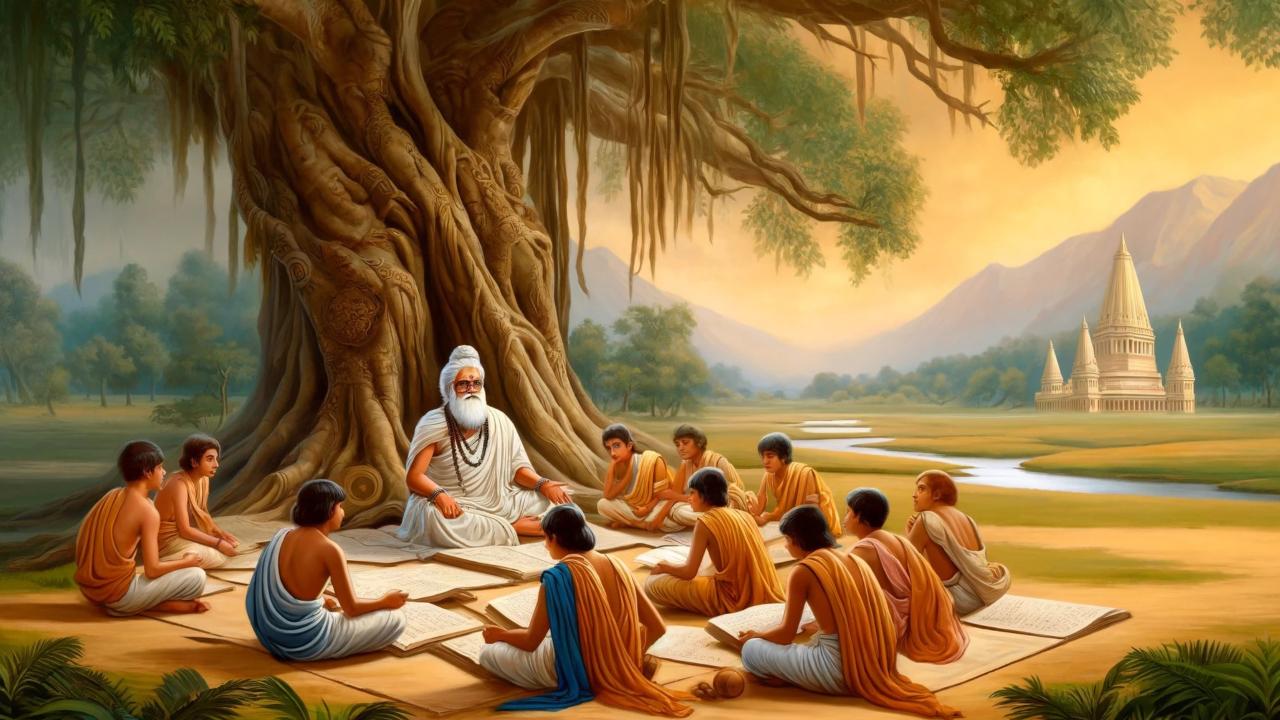What Is The Gurukul System Of Ayurveda?
The Gurukul system of Ayurveda is one of the oldest and most revered educational systems in the world. Rooted in ancient India, this system was not merely a method of teaching but a way of life that emphasized holistic learning, ethical practice, and the preservation of knowledge.
Ayurveda, often referred to as the “science of life,” is a traditional system of medicine that has been practiced in India for over 5,000 years. The Gurukul system played a pivotal role in ensuring that the principles and practices of Ayurveda were passed down through generations, maintaining their authenticity and efficacy.
This article delves into the origins, structure, and principles of the Gurukul system, its impact on Ayurvedic education, and its relevance in the modern world. By understanding this ancient system, we can appreciate the depth of Ayurvedic knowledge and explore how it can be adapted to address contemporary health challenges.
Historical and Origins of the Gurukul System
The Gurukul system traces its origins to ancient India, where education was considered a sacred duty and a means of attaining both worldly and spiritual knowledge. The term “Gurukul” is derived from two Sanskrit words: “Guru,” meaning teacher, and “Kul,” meaning family or household.
In essence, a Gurukul was a residential school where students lived with their teacher, forming a close-knit community dedicated to learning. Ayurveda, as a system of medicine, was deeply intertwined with the Gurukul system. Ancient texts like the Charaka Samhita and Sushruta Samhita—considered the foundational texts of Ayurveda—were studied and taught in these Gurukuls.
The knowledge of Ayurveda was not confined to medicine alone; it encompassed philosophy, ethics, spirituality, and the interconnectedness of all life. The Gurukul system flourished during the Vedic period (1500–500 BCE) and continued to thrive in subsequent centuries.
It was a time when education was not commercialized but seen as a sacred responsibility of the teacher to impart wisdom and the student to uphold it.
Structure of the Gurukul System
At the heart of the Gurukul system was the Guru-Shishya Parampara, or the teacher-disciple tradition. This relationship was based on mutual respect, trust, and a shared commitment to the pursuit of knowledge.
The Guru was not just a teacher but a mentor, guide, and role model. The Shishya (disciple) was expected to show unwavering dedication, humility, and a willingness to learn.
In the context of Ayurveda, the Guru was often a highly accomplished practitioner who had mastered the intricacies of the science. The Shishya would live with the Guru, observing and assisting in daily practices, and gradually absorbing the knowledge through direct experience.
Curriculum and Training
The curriculum in Gurukul was comprehensive and rigorous. It included:
- Study of Ayurvedic Texts: Students were required to memorize and understand ancient texts like the Charaka Samhita, Sushruta Samhita, and Ashtanga Hridaya. These texts covered a wide range of topics, including anatomy, physiology, diagnosis, treatment, and preventive medicine.
- Practical Training: Theoretical knowledge was complemented by hands-on training. Students learned to identify medicinal plants, prepare herbal formulations, and perform surgical procedures. They also gained experience in diagnosing and treating patients under the guidance of their Guru.
- Holistic Education: Ayurveda is not just a system of medicine but a way of life. Students were taught the importance of diet, lifestyle, and mental well-being in maintaining health. They also practiced yoga, meditation, and other spiritual disciplines to achieve balance and harmony.
Core Principles and Values
1. Holistic Education: The Gurukul system emphasized the holistic development of the individual. Education was not limited to intellectual growth but included physical, emotional, and spiritual well-being. This approach aligned perfectly with the principles of Ayurveda, which views health as a state of balance between the body, mind, and spirit.
2. Oral Tradition and Personalized Learning: In the absence of written texts in the early days, knowledge was transmitted orally. Students would memorize vast amounts of information and recite it back to their Guru. This method ensured that the knowledge was preserved accurately and passed down through generations.
The Gurukul system also recognized the unique abilities and needs of each student. Learning was personalized, with the Guru tailoring the teachings to suit the disciple’s aptitude and interests. This individualized approach fostered deep understanding and mastery of the subject.
3. Ethical Practice and Compassion: Ayurveda is not just about treating diseases but about promoting overall well-being. The Gurukul system instilled in students a strong sense of ethics and compassion. Practitioners were taught to treat all patients with kindness and respect, regardless of their social status or background.
Daily Life in a Gurukul
Life in a Gurukul was structured and disciplined. Students followed a daily routine that included:
- Study and Practice: Hours were dedicated to studying texts, preparing medicines, and treating patients.
- Meditation and Yoga: Spiritual practices were an integral part of daily life, helping students cultivate inner peace and clarity.
- Physical Labor: Students were often required to perform tasks like farming, cooking, and cleaning. This not only instilled a sense of responsibility but also connected them to nature—a core principle of Ayurveda.
The Gurukul was a self-sustaining community where everyone contributed to the collective well-being. This environment fostered a sense of unity and shared purpose.
Impact and Legacy
Preservation of Ayurvedic Knowledge: The Gurukul system played a crucial role in preserving the integrity of Ayurvedic knowledge. By passing down teachings orally and through direct experience, it ensured that the wisdom of Ayurveda remained unaltered over centuries.
Contribution to Global Medicine: Ayurveda’s influence extends far beyond India. Many of its principles, such as the use of herbal medicine and the importance of preventive care, have been incorporated into modern medical practices. The Gurukul system’s emphasis on holistic healing continues to inspire practitioners worldwide.
Modern Relevance: In recent years, there has been a renewed interest in the Gurukul system as people seek alternatives to conventional education and healthcare. Institutions inspired by the Gurukul model are emerging, blending traditional wisdom with modern techniques to create a more holistic approach to learning and healing.
Challenges and Adaptations
Decline of Traditional Gurukuls: With the advent of modernization and the commercialization of education, traditional Gurukuls have seen a decline. The shift towards institutionalized learning has led to a loss of the personal touch and holistic approach that characterized the Gurukul system.
Balancing Tradition and Modernity: One of the biggest challenges is finding a balance between preserving traditional knowledge and adapting to contemporary needs. While the core principles of Ayurveda remain relevant, there is a need to integrate modern scientific methods and technologies.
Revival Efforts: Efforts are underway to revive the Gurukul system. Organizations and practitioners are working to establish Gurukul-inspired schools and training programs that combine the best of traditional and modern education.
The Gurukul system of Ayurveda is a testament to the timeless wisdom of ancient India. It was not just a method of education but a way of life that nurtured the mind, body, and spirit. By preserving and transmitting the knowledge of Ayurveda, the Gurukul system has made an invaluable contribution to the world of medicine and healing.

























